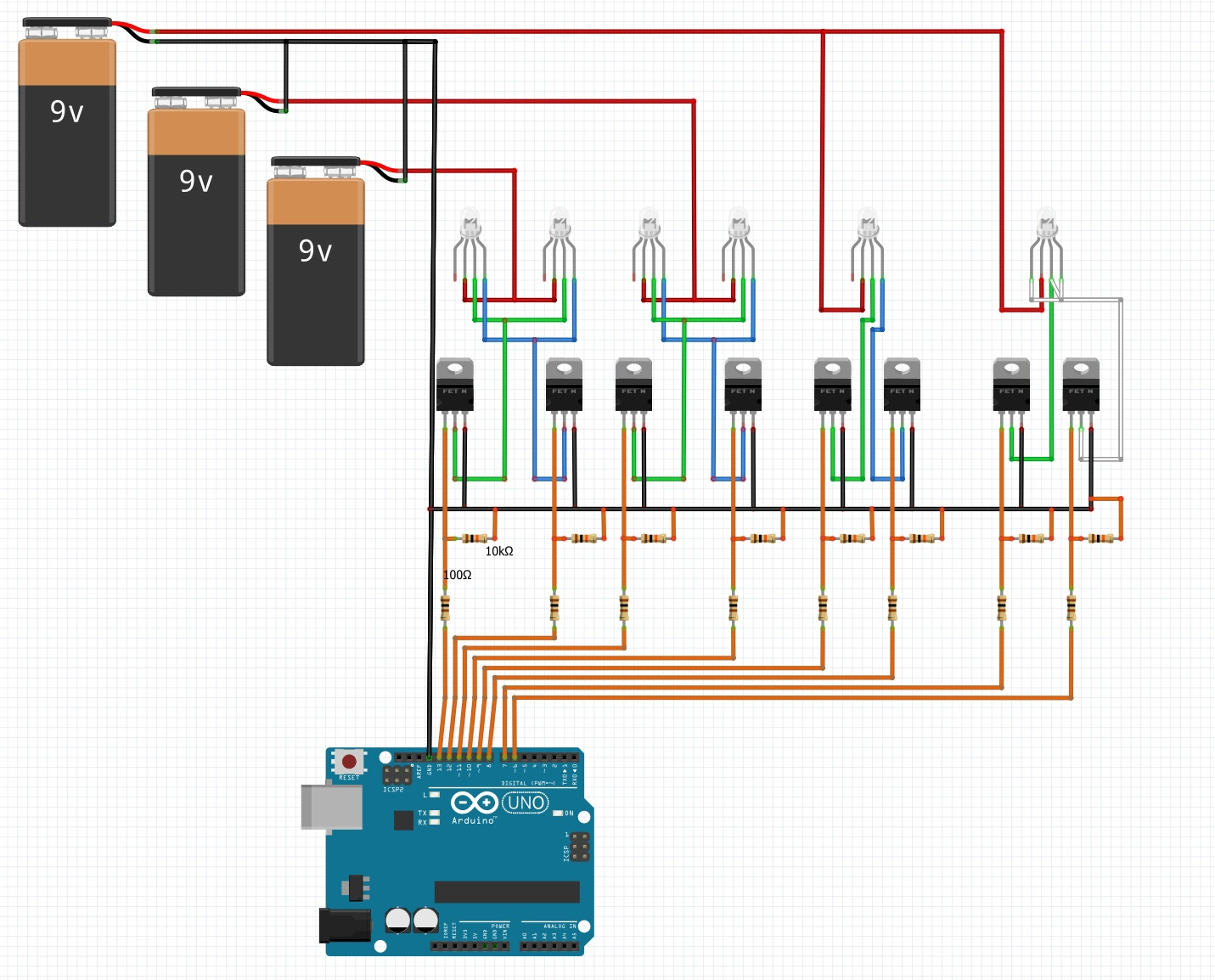Answer the question
In order to leave comments, you need to log in
Will this circuit work on a MOSFET with a common minus?
There is such a working example with a mosfet.

Will this option work if there are not 1, but 6 consumers?

Relatively speaking, with the Arduino, an unlocking voltage is supplied to the MOSFET and it should open for 9 volts, which will go to the consumer. In this case, the consumers are RGB diodes.
The general minus in this case is very embarrassing.
Answer the question
In order to leave comments, you need to log in
It will, in fact, be a standard three-phase circuit.
But I'd rather just parallel the crowns - it's better and more reliable
May work, but:
- LEDs will most likely burn out from 9V;
- there is an error in the connection of the rightmost LED;
- if you mean "ordinary indicator" LEDs with a rated current of up to 20 mA, then they can be connected to Durin and a 5 V supply without external transistors.
What needs to be added to the LEDs for a 9 volt supply? Yes, and from 5 - too.
Everything will burn to hell, the arduino is powered by 5V, worse, I don’t see galvanic isolation for the purpose of port protection, and in general it all looks pretty crooked in terms of ice management. Review the diagram in the direction of the ice drivers.
Here is an example of controlling 10 leads, the platform is NOT arduino, but binary logic, it is also binary in Africa.
https://youtu.be/EtVApHEo53o
Didn't find what you were looking for?
Ask your questionAsk a Question
731 491 924 answers to any question